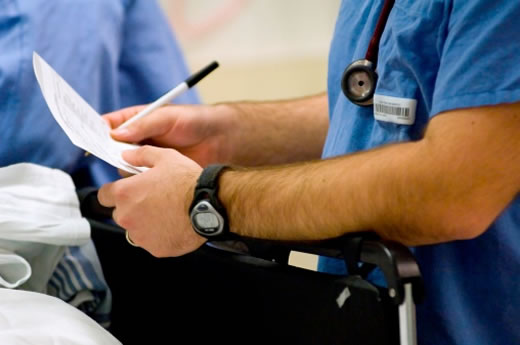In a survey of US emergency departments (EDs), visits that included treatment by both an attending physician and a resident in training (defined as a supervised visit) were associated with a greater chance of hospital admission, use of advanced imaging and a longer ED stay, when compared to attending-only visits in the ED.
The results of this study were published in the Dec. 10 issue of the Journal of the American Medical Association (JAMA), the annual issue dedicated to medical education.
"We were interested in whether empirical data justified the common assumption that supervised residents use more resources in the ED than an attending practicing alone," says Stephen R. Pitts, MD, MPH, associate professor of emergency medicine, Emory University School of Medicine. "Policy makers have assumed, without much data to back this belief, that care at an academic medical center costs more than care at a non-teaching hospital because of those extra resources used in the teaching setting. But some of the higher cost of academic medical centers is due to specialized functions like burn units and research activities, rather than teaching."
Pitts and other Emory researchers reviewed data from the 2010 National Hospital Ambulatory Medical Care Survey to compare supervised versus attending-only visits in US emergency departments and during ED visits. They studied some of the resources used during these visits including: advanced imaging (MRI, CT scans or ultrasound), blood testing, longer stays in the ED and hospital admission.
Of 29,182 ED visits to the 336 non-pediatric EDs in the sample, 3,374 visits were supervised visits. Compared with the 25,808 attending-only visits, supervised visits were significantly associated with more frequent hospital admission (21 percent versus 14 percent), advanced imaging (28 percent versus 21 percent), and a longer median ED stay (226 minutes versus 153 minutes). These differences remained significant after adjustment by other possible causes of increased resource use. There was no significant difference in rates of blood testing.
The researchers also analyzed resource use by teaching intensity, comparing non-teaching EDs to both minor and major teaching EDs, defined as EDs with less than half or more than half teaching visits respectively.
"An important hypothesis-generating secondary finding is that the higher use of resources occurs mostly in minor teaching hospitals rather than in the major teaching hospitals where residents get most of their training," says Pitts. "That finding suggests that despite the overall higher cost of teaching encounters, residents are taught a ‘higher value’ practice style in the setting where they receive most of their practical experience." The study did not assess the outcomes of care.

